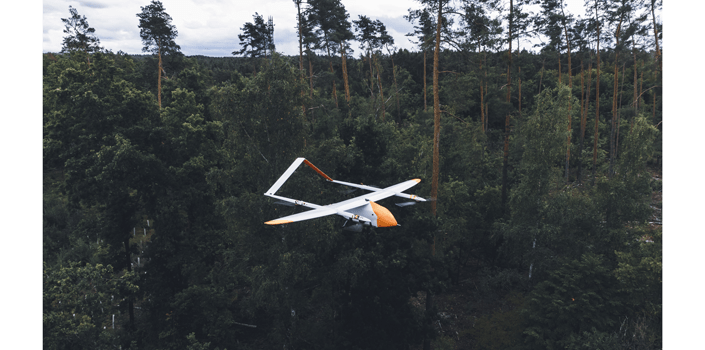New System Offers Improved Accuracy for Firefighters
Early detection of forest fires is critical to reducing their impact. Drones equipped with advanced cameras and artificial intelligence (AI) can provide firefighters with valuable time to respond quickly. This capability is becoming increasingly important as the risk of forest fires grows due to global warming.
A study by the European Forest Fire Information Systems (EFFIS) found that forest fires are responsible for up to 20% of global CO2 emissions. In 2022 alone, fires in Germany burned nearly 4,300 hectares of forest, releasing approximately 739,000 tons of CO2. These fires caused extensive environmental and economic damage.
A research team from Friedrich-Alexander-Universität Erlangen-Nürnberg is addressing the challenge with drone technology, aiming to reduce the impact of forest fires. “The earlier a forest fire is identified, the faster the fire department can bring it under control and thus keep the damage to a minimum,” explains Leon Seidel, a member of the Evolonic research project.
Drone System Development and Capabilities
Evolonic, a company involved in the project, has been developing drones and sensor systems for forest fire detection since 2018. The team has built and tested four unmanned aerial vehicle (UAV) prototypes at various stages of development.

One of these drones, equipped with a full detection system, has been in use since the summer of 2023. “This drone has a range of approximately 100 kilometers and can remain airborne for about 60 minutes,” says Seidel. “During this time, the drone flies on predefined routes that are optimized to cover as large an area of forest as possible.”
The drone is outfitted with an industrial camera and a lens provided by SVS-Vistek, along with AI software developed by Evolonic. The camera captures images at a rate of 15 frames per second, which the AI system analyzes for signs of smoke or fire. “To achieve the shortest possible response times for extinguishing and rescue activities, a web application is available to the fire department control centers and emergency services, which displays the exact position of a suspected fire as well as other relevant information and images,” Seidel explains.
Once confirmed, the live images and data from the drone help firefighters choose the best approach to control the fire.
Advanced Vision Systems
A key feature of the drone’s detection capabilities is its high-quality vision system, made possible by SVS-Vistek’s exo267CU3 USB3 Vision color camera. This camera is equipped with an 8.8-megapixel resolution and a global shutter CMOS sensor from Sony. At only 138 grams, it meets the drone’s lightweight requirements without sacrificing performance. The camera’s frame rate allows it to capture up to 32 frames per second.
Seidel notes that earlier prototypes faced challenges in achieving high image quality in various lighting conditions. This issue was resolved after Evolonic’s team collaborated with SVS-Vistek. “This combination of camera and lens was the optimal choice for its large sensor and low weight, as well as the good software support, including for ARM64, and easy connection to the Nvidia Jetson,” says Seidel.
With this system, the drone has shown a significantly higher early detection rate of fire sources compared to previous versions. The enhanced camera quality also helps the drone operate effectively in different outdoor conditions, such as varying light and temperatures.
Future of Drone-Based Fire Detection
In the summer of 2023, Evolonic drones were tested in Franconia and during a large forest fire drill in Saxony-Anhalt. The team is optimistic about expanding the application area to include Bavaria and possibly all of Germany. “We estimate the costs for the further development of the system until it is market-ready at around half a million Euros,” says Seidel. The team aims to eventually create fully autonomous drones capable of predicting fire spread.
The Bavarian state government is currently considering using Evolonic’s drone system in a large pilot project set to begin in early 2025. Seidel believes that drones offer a significant advantage over other fire detection methods like satellites and IoT sensors. “The big advantage of UAV-based forest fire detection over these technologies is the high localization accuracy and coverage of relatively large areas at low cost,” he adds.
As climate change continues to increase the risk of forest fires, drone technology like that developed by Evolonic and SVS-Vistek could become an essential tool for fire prevention efforts.
Learn more at www.svs-vistek.com.
Read more:
Miriam McNabb is the Editor-in-Chief of DRONELIFE and CEO of JobForDrones, a professional drone services marketplace, and a fascinated observer of the emerging drone industry and the regulatory environment for drones. Miriam has penned over 3,000 articles focused on the commercial drone space and is an international speaker and recognized figure in the industry. Miriam has a degree from the University of Chicago and over 20 years of experience in high tech sales and marketing for new technologies.
For drone industry consulting or writing, Email Miriam.
TWITTER:@spaldingbarker
Subscribe to DroneLife here.